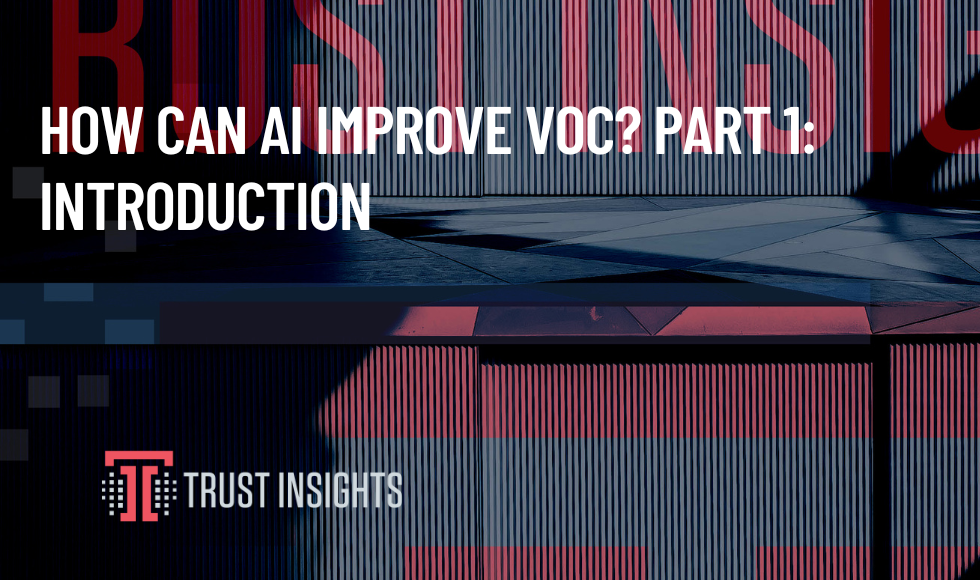This article originally appeared here: https://marketing.toolbox.com/articles/what-is-voice-of-customer-data-and-how-can-ai-improve-its-value-definition-key-components-and-ai-powered-voc-techniques
What is Voice of Customer Data (VOC)?
Voice of the Customer (VOC) is defined as the information you collect from your audience about what they like and don’t like, their behaviors and interests, their opinions, and their demographics. It’s the data that helps you do a better job of delivering the right messages, products and services to your customers.
VOC data powers two primary strategic imperatives at most companies: innovation and retention. With properly collected VOC data, companies create new, customer-centric innovations, answering unmet needs in the marketplace, and seizing opportunities that competitors miss. VOC data also helps retain customers by solving problems specific to their needs and interactions with a company.
VOC helps to avoid guessing at the needs of your customers and instead enables you to use data to understand who they are and what they want. While the best way to get into the heads of your customers is to collect the Voice of the Customer data, this can be a big challenge for companies to do, let alone do well – so we’ll walk through how to utilize artificial intelligence to assist in this endeavor.
But to start, when you’re collecting VOC data, you want it to be comprehensive. It’s easy to collect little bits of information here and there, but it doesn’t tell the whole story. In order to get the full picture, you should be collecting information at every stage of the customer experience.
Collecting VoC at All 7 Stages of Customer Experience

The customer experience (CX) is the process that someone goes through when they move from stranger to customer, to part of your company’s family. Within each stage of the CX, there are opportunities to collect VOC information. During the buyer’s journey, you can collect information like search intent, which ads have caught their attention, and what additional information they’re interested in. This information will help inform how you communicate about your product or services to external audiences. You can collect information about sentiment, usage, and case studies during the owner’s journey, which will help you in attracting similar customers.
What Information Comprises VOC Data?
VOC data comes from a variety of sources, including but not limited to:
- Face to face interviews
- Focus groups
- Market research surveys
- Observational data (watching the customer, shadowing the customer)
- Roleplay
- Customer advisory boards
- Environmental and landscape data collection
- Conferences and trade shows
- UI/UX data collection
One of the challenges of VOC data is that very little of it tends to be quantitative in nature. Much of it is unstructured text data, which can present challenges to companies seeking insights to extract. This is where data science, artificial intelligence (AI) and machine learning (ML) play a vital role in unlocking the value of VOC data.
Up Next: 5 techniques of AI to collect Voice of Customer Data
|
Need help with your marketing AI and analytics? |
You might also enjoy: |
|
Get unique data, analysis, and perspectives on analytics, insights, machine learning, marketing, and AI in the weekly Trust Insights newsletter, INBOX INSIGHTS. Subscribe now for free; new issues every Wednesday! |
Want to learn more about data, analytics, and insights? Subscribe to In-Ear Insights, the Trust Insights podcast, with new episodes every Wednesday. |







One thought on “How can AI improve VOC? Part 1: Introduction”